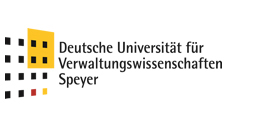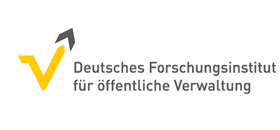Refine
Document Type
- Contribution to online periodical (5)
- Public lecture (4)
- Other (1)
- Working Paper (1)
Is part of the Bibliography
- no (11)
Keywords
- Völkerrecht (9)
- Exportkontrolle (7)
- Technologie (6)
- international law (6)
- Rechtswissenschaften (5)
- dual-use (5)
- export control (5)
- Friedenssicherung (3)
- Nonproliferation (3)
- Internationaler Frieden und Sicherheit (2)
For centuries, export control regulations have accompanied the development of new weapon technologies. The revelations of the ‘Pegasus Project’ have put the question of whether and how to regulate the export of the new technology ‘cyberweapons’ in the limelight: Is the current international export control law up to the challenge of sufficiently regulating the proliferation of ‘cyberweapons’ or does it need an update? To answer this question, the blog post will, first, turn to the definition and relevance of ‘cyberweapons’. Secondly, international export control law is introduced as a possible measure to mitigate the risks posed by ‘cyberweapons’ against the backdrop of regulating the use of ‘cyberweapons’ or establishing a moratorium on its trade. Third, the blog post will assess the export of ‘cyberweapons’ in general and the export of Pegasus in particular within the current international export control framework. The current framework seems to touch upon partial aspects of the trade with ‘cyberweapons’. However, it stands to fear that it is not up to the task of sufficiently curtailing the proliferation of ‘cyberweapons’ and the associated risks, as it especially leaves the underlying problem of the trade with zero-day vulnerabilities untouched.
Digital technologies often have a dual-use nature, which means they can be used for both civil and military purposes. For instance, object recognition software can be used for auto-nomous civil driving or for autonomous targeting within armed drones. Thus, their uncon-trolled proliferation may pose risks to international peace and security. Generally, export controls aim to mitigate these risks while avoiding unreasonable restrictions on global trade and development. The novelty of digital dual-use items and the dynamics of their transfer pose new challenges for the international export control system and raise critical legal questions under international law. Does international law hold export control rules that sufficiently address the broad spectrum of relevant digital dual-use items and their rapid technological advancement? Furthermore, how do these rules treat the digital transfer of such items?
The presentation aims to answer these questions by, first, carving out the relevant inter-national export control rules. Secondly, the application of these rules to the digital dual-use items and their international transfer is analyzed. Finally, to the extent that the applicability is affirmed, the presentation will examine the international export control law’s requirements to the international transfer of digital dual-use items.
‘Killer Flying Robots Are Here. What Do We Do Now?’, ‘A Military Drone With A Mind Of Its Own Was Used In Combat, U.N. Says’ and ‘Possible First Use of AI-Armed Drones Triggers Alarm Bells’ – these are just some headlines to a report issued by the UN Panel of Experts on Libya. What caught the international attention was the panel’s description of the following scene in Libya’s civil war: ‘[Forces] were […] hunted down and remotely engaged by the un-manned combat aerial vehicles or the lethal autonomous weapons systems such as the STM Kargu-2 […]. The lethal autonomous weapons systems were programmed to attack targets without requiring data connectivity between the operator and the munition: in effect, a true “fire, forget and find” capability.’
However, the disruptive potential of AI is not limited to out-of-control killer drones or the military context in general – nor does it only have a negative potential. AI and its global trade promote international development and technological innovation, thereby improving lives. Therefore, the efforts to build a legal and policy framework to harness AI’s benefits and thwart its dangers is in full swing. States, the European Union, international organizations, NGOs, and scholars alike come up with ways of achieving that end. The approaches to the issue are manifold. However, most focus either on instating rules on the development of AI, for instance, how to ensure AI is built ethically or on its use, ie, banning its use in lethal auto-nomous weapon systems (LAWS). Whereas all these efforts are important, a further layer of protection has not gained much traction: regulating AI’s global trade so that responsible actors can use it to benefit humankind while preventing it from ending up in the hands of irresponsible actors.
The legal instrument to achieve this end is international export control law. It aims to mitiga-te the risks to international peace and security associated with the proliferation of sensitive items to irresponsible actors while avoiding unreasonable restrictions on global trade, eco-nomic development, and technological innovation. However, the international export control law is not yet suited to fulfill its promise regarding AI. The dual use nature of AI poses signifi-cant risks to international peace and security. Nevertheless, only in limited circumstances applies international export control law to the transfer of AI applications and technology, leaving a gap in the international export control framework. Until this gap is closed, inter-national human rights due diligence might provide fallback protection to address the issue
of mitigating the risks associated with the proliferation of dual use AI.
Whether a person who worked as an ‘expert on mission’ for the United Nations outside his home state was acting as an ‘official’ for the United Nations within the meaning of the Convention on the Privileges and Immunities of the United Nations and was, therefore, exempt from taxation by his home state.
Whether sovereign rights under the Convention on the Continental Shelf and the Convention on the Territorial Sea and the Contiguous Zone were conferred on the nation state or the nation’s constituent states.
Whether the states of a federation had international personality, or only the federation itself.
Die Europäische Kommission unterbreitete 2016 einen Gesetzesvorschlag, um die in die Jahre gekommene Dual-Use Verordnung von 2009 zu reformieren. Die Verordnung reguliert den Export von Gütern, die sowohl zivilen als auch militärischen Zwecken dienen können. Ziel war es, die Exportkontrollvorgaben an neue Herausforderungen anzupassen, wie sie sich aus der Verwendung von digitalen Technologien durch oppressive Regime ergeben.
Die Verhandlung zwischen der Kommission, dem Parlament und den EU-Staaten war wegen des Widerstands einiger Länder, darunter Deutschland, ins Stocken geraten. Insbesondere drei Faktoren sind dabei ins Rampenlicht gerückt: Die Wahrung von Menschenrechten, die Wahrung europäischer Sicherheitsinteressen und die Interessen der Exportwirtschaft. Nun soll noch dieses Jahr ein Kompromisstext verabschiedet werden.
Wir möchten besprechen, wie die geostrategischen und wirtschaftlichen Interessen einerseits und der Schutz von Menschenrechten andererseits in Einklang gebracht werden können und welche Rolle die EU global in diesem Bereich einnimmt.
Der moderne Krieg verwandelt sich mehr und mehr zu einem digitalen Schlachtfeld: Die Innovationen reichen von autonomen Waffensystemen über digitale Kommandostrukturen bis hin zu Cyberwaffen. Die zunehmende Vernetzung von Militärtechnologien sowie ihr höhe-res Maß an Autonomie gehen Hand in Hand mit einem erhöhten Risiko für internationalen Frieden und Sicherheit. Oft können diese Technologien als sog. Dual Use Güter aber auch zivil genutzt und global gehandelt werden. Sie bergen neben Risiken also ebenfalls ein Potenzial für die internationale wirtschaftliche Entwicklung. Wie aber lässt sich verhindern, dass digitale Dual-Use Güter in die falschen Hände geraten, wie z. B. an diktatorische Regime oder Terroristen? Und ist es möglich, dabei einen fairen Ausgleich zwischen internationaler Sicherheit und internationaler Entwicklung herzustellen?
To contribute to the laudable objectives regarding Export Controls the EU – US Trade and Technology Council has set, a multi-disciplinary network of independent experts from research institutes, think tanks, and policy advisory bodies, has joined forces and drafted the following priorities for action.
A further elaboration of the actions recommended below will be performed by the members of this international network in the weeks and months to come, as Working Group 7 of the EU – US Trade and Technology Council will proceed in its work.

